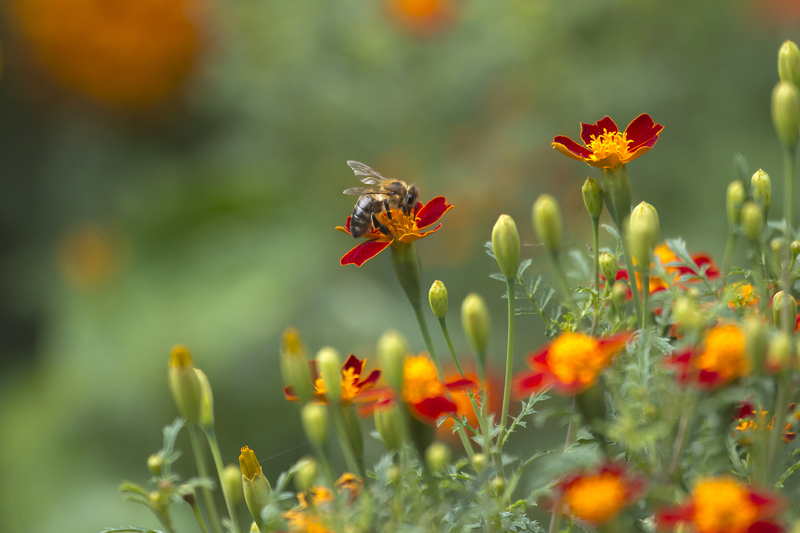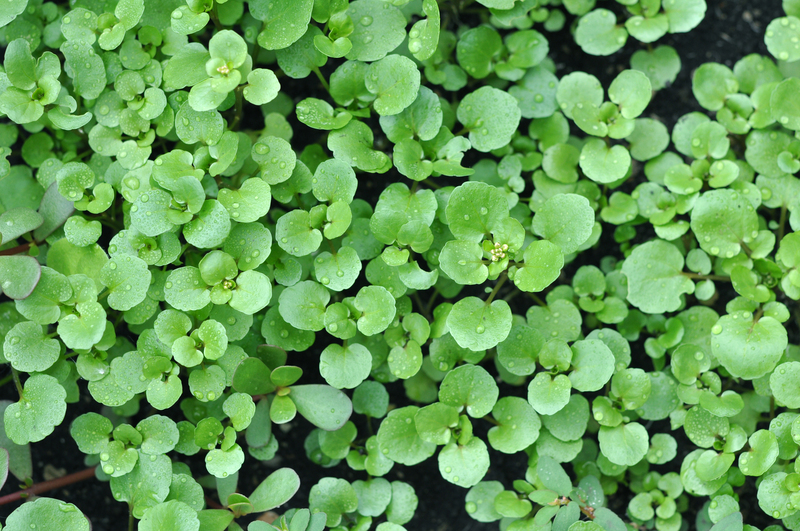Cultivating Orchids: A Guide to Success
Posted on 23/05/2025
Cultivating Orchids: A Guide to Success
If you're fascinated by the beauty, elegance, and exotic aura of orchids, you're not alone. These remarkable flowering plants have enchanted gardeners and collectors for centuries with their stunning blooms, wide variety, and surprising resilience. However, many aspiring orchid growers are intimidated by their reputation for being finicky. The truth? Growing orchids can be a highly rewarding pursuit--even for beginners--if you understand their needs. This comprehensive, Google-friendly guide to cultivating orchids will walk you through essential techniques, troubleshooting, and expert tips to help your orchid garden thrive.
Why Cultivate Orchids?
Orchids belong to the Orchidaceae family, one of the largest families of flowering plants, encompassing more than 25,000 species and thousands of hybrids. Their diverse forms, vivid colors, and often long-lasting blooms make them highly desirable indoor and outdoor plants.
- Endless Variety: From the delicate Phalaenopsis (moth orchid) to the extravagant Cattleya, there's an orchid for every environment and skill level.
- Year-Round Blooms: Different orchid species bloom at various times, allowing a carefully curated collection to celebrate flowers all year.
- Air Purification: Like many houseplants, orchids help purify the air and add humidity to indoor spaces.
- Satisfaction: Few gardening achievements are as rewarding as coaxing an orchid to bloom after a period of dormancy.

Understanding Orchid Basics
Orchid Types for Home Cultivation
There are hundreds of popular orchid species and hybrids available, but some are especially well-suited for home growers who are just getting started. Here are the most widely cultivated types:
- Phalaenopsis (Moth Orchids): Famous for their ease of care and long-lasting blooms; ideal for beginners.
- Dendrobium: These orchids produce clusters of blooms and thrive in a wide range of conditions.
- Cattleya: Known as the "Queen of Orchids," celebrated for their showy flowers and exquisite fragrance.
- Oncidium: The "dancing lady orchid" is loved for its vibrant sprays of small blooms.
- Paphilopedilum (Lady Slipper Orchid): Distinctive pouch-shaped flowers, best for experienced growers.
An Overview of Orchid Anatomy
To successfully cultivate orchids, it's crucial to understand some basic anatomy:
- Roots: Most orchids are epiphytes, meaning their thick, white roots absorb moisture and nutrients from the air, not soil.
- Leaves: Typically fleshy and waxy, orchid leaves store water and are indicators of plant health.
- Pseudobulbs: Swollen stems (in some types) that store water and nutrients.
- Flowers: Orchid blooms emerge from flower spikes or stems, with an extraordinary diversity of colors and shapes.
Essential Elements for Orchid Cultivation Success
1. Light Requirements for Orchids
Finding the right light level for your orchid is fundamental. Most prefer bright, indirect sunlight:
- Phalaenopsis: Filtered east or north-facing windows, out of direct midday sun.
- Dendrobiums and Cattleyas: Can tolerate more light; south or west windows with some sheer curtain protection.
An easy test: Leaf color is your guide. Dark green leaves usually mean too little light, while reddish or yellowish tints indicate excess light.
2. Correct Temperature Ranges
Orchids thrive in temperature ranges similar to or just slightly warmer than typical room temperatures.
- Daytime: 65?F - 80?F (18?C - 27?C)
- Nighttime: 55?F - 65?F (13?C - 18?C)
A 10-15?F (5-8?C) drop at night can help promote flower spikes in many species. Sudden, prolonged temperature shifts can shock your plant.
3. Managing Humidity Levels
Most cultivated orchids prefer humidity levels of 40% to 70%. Indoor air, especially in winter, may be too dry.
- Use humidity trays (shallow trays filled with water and pebbles beneath the orchid pot, never letting roots sit directly in water).
- Group plants together to increase local humidity through collective transpiration.
- Mist your orchids with water (avoid flowers and the crown to prevent rot).
4. The Importance of Air Circulation
Orchids need air movement to prevent disease and discourage pests.
- Use gentle oscillating fans in your growing space.
- Avoid stuffy, stagnant conditions that encourage mold and fungus.
5. Watering Techniques for Orchids
Improper watering is the most common cause of orchid declines. Remember: orchids prefer to dry slightly between waterings. Their roots need oxygen just as much as water!
- Water thoroughly, allowing water to run through the pot and drain completely.
- Never let an orchid pot stand in water.
- Water early in the day so leaves and crowns dry before night.
- Use tepid, distilled or rainwater when possible, as some tap water is too hard.
The ideal orchid watering frequency? Typically once a week, but this depends on temperature, light, humidity, and your growing medium. Let roots and potting mix almost dry out before watering again.
6. Choosing the Best Orchid Potting Mix
Never use traditional potting soil for orchids--it will smother their roots. Instead, use specialized orchid mixes that ensure excellent drainage and air flow:
- Bark-based mixes: Most popular for epiphytes such as Phalaenopsis and Cattleyas.
- Sphagnum moss: Retains moisture for water-loving types, but can stay too wet if overpacked.
- Additional ingredients: Perlite, charcoal, coconut husk, or pumice can be blended for custom mixes.
7. Fertilizing Orchids
Orchids need less fertilizer than you might think. A general guideline is to use a balanced, water-soluble fertilizer at one-quarter to one-half strength:
- "Weekly, weakly": Dilute fertilizer and apply every 7-10 days during active growth.
- Flush: Once a month, water thoroughly with plain water to prevent salt buildup.
- Reduce feeding: In winter or dormancy, cut back to once a month.
Proper Orchid Repotting Techniques
Regular repotting is vital to orchid health. Most orchids benefit from repotting every 1-2 years, or when you notice:
- Roots creeping out of the pot
- Potting medium breaking down and retaining excess moisture
- Poor drainage, root rot, or visible pest infestation
How to Repot Your Orchid
- Gently remove the orchid from its old pot.
- Trim off dead or mushy roots with sterilized scissors.
- Rinse healthy roots under lukewarm water.
- Place the orchid in a clean pot with fresh orchid mix, spreading roots out gently.
- Water lightly and keep out of direct sun for a week post-repotting.
Common Orchid Cultivation Problems and Solutions
Yellowing Leaves
Often caused by improper watering (too much or too little), insufficient light, or the normal aging of old leaves. Adjust your care routine as needed.
Orchid Root Rot
Mushy, black, or foul-smelling roots indicate root rot, usually from overwatering or compacted potting mix. Remove diseased roots and repot.
Pest Issues
- Mealybugs, spider mites, and scale insects are the most common pests. Use neem oil or insecticidal soap, and improve air flow.
Why Won't My Orchid Bloom?
- Insufficient light: Gradually increase light intensity.
- No temperature drop at night: Especially important for Phalaenopsis to trigger blooms.
- Recent repotting or stress: Give the plant time to recover.
Expert Tips for Advanced Orchid Cultivation
- Keep a journal: Noting watering, fertilizing, repotting, and blooming dates helps you fine-tune your care.
- Experiment with varieties: Try different species and hybrids to find those that thrive in your environment.
- Join an orchid society or online group: Connect with enthusiasts for advice, plant swaps, and community.
- Propagate your orchids: Advanced growers can attempt division, keiki (baby plant) rooting, or even growing from seed (for the truly adventurous).
Seasonal Orchid Care Guide
Spring
- Increase watering as plants break dormancy and begin new growth.
- Repot as needed following bloom.
Summer
- Watch for signs of sunburn (bleaching or brown spots) and protect from extreme heat.
- Boost humidity and watch for pests.
- Feed actively growing plants.
Autumn
- Some orchids enter a resting phase--reduce watering and feeding.
- Move plants to maximize available light as days shorten.
Winter
- Beware of dry air due to indoor heating.
- Cut back fertilizing unless your orchid is actively growing.
- Some varieties bloom in winter--watch for spikes!
The Joy of Cultivating Orchids
Whether you choose a robust Phalaenopsis for your kitchen windowsill or curate a specialized collection, the process of nurturing orchids is both calming and exhilarating. Tracking the unfurling of a new bloom is a special thrill for any gardener. With a little patience, observation, and attention to the unique requirements outlined in this comprehensive guide to orchid growing, you can enjoy years of breathtaking flowers and healthy plants.
Are you ready to start cultivating orchids at home? Embrace the challenge and beauty of these amazing plants--and soon you'll be basking in the success that comes with every new bud.

Frequently Asked Questions about Growing Orchids
- How long do orchid flowers last?
Depending on the species, orchid blooms can last from a few weeks up to several months. Phalaenopsis are known for exceptionally long-lasting flowers. - Do orchids need to be pruned?
Trim spent flower spikes to encourage new growth, but avoid removing healthy leaves and roots. - Can I grow orchids outdoors?
In warm, humid climates, some varieties (like Dendrobiums and Cattleyas) thrive outdoors in filtered light. In colder zones, bring indoors when temperatures drop. - How can I revive a dying orchid?
Assess roots, repot if necessary, and gradually improve watering or light conditions. Orchids are resilient and often recover with proper care.
Conclusion: Orchid Cultivation Made Simple
Cultivating orchids is more accessible than ever. By understanding their natural needs--air, light, water, and rest--you can grow a lush, beautiful orchid collection that fills your home with color and fragrance. Apply these proven strategies and enjoy the ongoing adventure of successful orchid growing!

